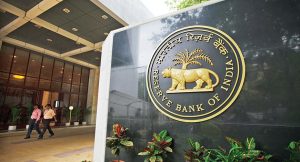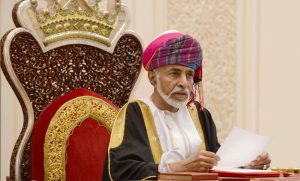 The Reserve Bank of India has released a report “National Strategy for Financial Inclusion (NSFI): 2019-2024“. The National Strategy for Financial Inclusion for the period 2019-2024 has been formulated by RBI under the aegis of Financial Inclusion Advisory Committee (FIAC). The report has been ratified by the Financial Stability Development Council (FSDC). As per the official statement, “the National Strategy for Financial Inclusion 2019-2024 sets forth the vision and key objectives of the financial inclusion policies in India to help expand and sustain the financial inclusion process at the national level through a broad convergence of action involving all the stakeholders in the financial sector. The strategy aims to provide access to formal financial services in an affordable manner, broadening & deepening financial inclusion and promoting financial literacy & consumer protection.” The Reserve Bank of India has released a report “National Strategy for Financial Inclusion (NSFI): 2019-2024“. The National Strategy for Financial Inclusion for the period 2019-2024 has been formulated by RBI under the aegis of Financial Inclusion Advisory Committee (FIAC). The report has been ratified by the Financial Stability Development Council (FSDC). As per the official statement, “the National Strategy for Financial Inclusion 2019-2024 sets forth the vision and key objectives of the financial inclusion policies in India to help expand and sustain the financial inclusion process at the national level through a broad convergence of action involving all the stakeholders in the financial sector. The strategy aims to provide access to formal financial services in an affordable manner, broadening & deepening financial inclusion and promoting financial literacy & consumer protection.” |
The report stated the following 6 pillars as part of strategic objectives to achieve the aim of financial inclusion:
|
 India has deployed its aircraft carrier INS Vikramaditya in Arabian Sea. The aircraft carrier was deployed amid the Pakistan-China naval exercise “Sea Guardians” taking place in North Arabian Sea. India has deployed its aircraft carrier INS Vikramaditya in Arabian Sea. The aircraft carrier was deployed amid the Pakistan-China naval exercise “Sea Guardians” taking place in North Arabian Sea. |
 The longest serving ruler of Oman Sultan Qaboos bin Said passed away. He was a charismatic and visionary leader who transformed Oman into a modern and prosperous nation. He was ruling Oman since 1970. The Sultan is the prime decision-maker in Oman and also holds the portfolio of Prime Minister, supreme commander of the armed forces, minister of foreign affairs, minister of finance and minister of defence. The longest serving ruler of Oman Sultan Qaboos bin Said passed away. He was a charismatic and visionary leader who transformed Oman into a modern and prosperous nation. He was ruling Oman since 1970. The Sultan is the prime decision-maker in Oman and also holds the portfolio of Prime Minister, supreme commander of the armed forces, minister of foreign affairs, minister of finance and minister of defence. |
 The Union Government has released the “State Energy Efficiency Index 2019”. The index was released during the ‘Review, Planning and Monitoring (RPM)’ meeting held in New Delhi. The index is developed by Bureau of Energy Efficiency (BEE) along with Alliance for an Energy Efficient Economy (AEEE). The SEE Index 2019 traces the expansion and achievements of Energy Efficiency (EE) drives running in 36 states and union territories. The SEE Index 2019 constitutes quantitative, qualitative and outcome based 97 indicators to check energy efficiency initiatives, programs and outcomes in five distinct areas: transport, industry, agriculture, buildings, municipalities, and DISCOMs. State Energy Efficiency Index 2019 has divided States/UTs into 4 groups on the basis of Total Primary Energy Supply (TPES) desired to meet the State’s/UT’s actual energy demand through electricity, coal, oil, gas, etc. across all the sectors. The 4 groups are: ‘Front Runner’, ‘Achiever’, ‘Contender’ and ‘Aspirant’. The Union Government has released the “State Energy Efficiency Index 2019”. The index was released during the ‘Review, Planning and Monitoring (RPM)’ meeting held in New Delhi. The index is developed by Bureau of Energy Efficiency (BEE) along with Alliance for an Energy Efficient Economy (AEEE). The SEE Index 2019 traces the expansion and achievements of Energy Efficiency (EE) drives running in 36 states and union territories. The SEE Index 2019 constitutes quantitative, qualitative and outcome based 97 indicators to check energy efficiency initiatives, programs and outcomes in five distinct areas: transport, industry, agriculture, buildings, municipalities, and DISCOMs. State Energy Efficiency Index 2019 has divided States/UTs into 4 groups on the basis of Total Primary Energy Supply (TPES) desired to meet the State’s/UT’s actual energy demand through electricity, coal, oil, gas, etc. across all the sectors. The 4 groups are: ‘Front Runner’, ‘Achiever’, ‘Contender’ and ‘Aspirant’. |
| Key results of SEE Index 2019: The State Energy Efficiency Index 2019 was topped by Haryana, Karnataka and Kerala while Manipur, Jammu & Kashmir, Jharkhand and Rajasthan performed worst in their respective groups. The states of Haryana, Karnataka and Kerala were in “Achiever” group and there was not a single state in the “Front Runner” group. |
 Census exercise India-2021 to begin on 1st April 2020 and will end on 30th of September 2020. Census India-2021 will be conducted through a mobile phone application. The enumerators of the census will seek the information of the mobile number of the head of the family, information related to TV, Internet, vehicles owned, toilets, source of drinking water besides asking other questions during the house listing phase of the exercise. Census exercise India-2021 to begin on 1st April 2020 and will end on 30th of September 2020. Census India-2021 will be conducted through a mobile phone application. The enumerators of the census will seek the information of the mobile number of the head of the family, information related to TV, Internet, vehicles owned, toilets, source of drinking water besides asking other questions during the house listing phase of the exercise. |
 Union Minister for Communications, Electronics and Information Technology Ravi Shankar Prasad inaugurated the submarine cable works on laying between Chennai – Andaman and Nicobar Islands. The submarine cables will be initially laid from Chennai to Port Blair covering a distance of 1,450 kilometres. He also flagged off the ship to lay the cable at Chennai Port. At the initial stage of commissioning of the project itself, the islands can get a data speed of 400-gigabytes per second. Union Minister for Communications, Electronics and Information Technology Ravi Shankar Prasad inaugurated the submarine cable works on laying between Chennai – Andaman and Nicobar Islands. The submarine cables will be initially laid from Chennai to Port Blair covering a distance of 1,450 kilometres. He also flagged off the ship to lay the cable at Chennai Port. At the initial stage of commissioning of the project itself, the islands can get a data speed of 400-gigabytes per second. |
 On January 9, 2020, the Andhra Pradesh Government signed Memorandum of Understanding with a German firm to implement Zero Budget Natural Farming in the state. On January 9, 2020, the Andhra Pradesh Government signed Memorandum of Understanding with a German firm to implement Zero Budget Natural Farming in the state. |
|
|
|
 On January 9, 2020, Ministry of New and Renewable Energy released its year end review. According to the report, over 150 GW of renewable energy has been installed so far in India. On January 9, 2020, Ministry of New and Renewable Energy released its year end review. According to the report, over 150 GW of renewable energy has been installed so far in India. |
India’s initiatives in 2019
|
|
|
 Ladakh women team has won the 7th National Ice Hockey Championship women trophy. In the final match, Ladakh scoring 2 goals against Delhi and won the tournament. The tournament was organised by the Ice Hockey Association of India (IHAI) in association with the Ladakh winter sports club. 4 women teams representing Chandigarh, Delhi, Maharashtra, and Ladakh participated in the tournament. Ladakh women team has won the 7th National Ice Hockey Championship women trophy. In the final match, Ladakh scoring 2 goals against Delhi and won the tournament. The tournament was organised by the Ice Hockey Association of India (IHAI) in association with the Ladakh winter sports club. 4 women teams representing Chandigarh, Delhi, Maharashtra, and Ladakh participated in the tournament. |
 Indian Railways is in the process of installing Internet Protocol (IP) based Video Surveillance System (VSS) at stations to enhance security. Railway Board of India has approved works for provision of Video Surveillance System covering 983 stations over Indian Railways under Nirbhaya funds. This year a budget of Rs. 250 crore was allotted to Indian Railways from Nirbhaya fund for installation of the video surveillance system. In the first phase of installation, VSS is being installed at 200 stations and as on date work has been completed at 81 stations across India. Indian Railways is in the process of installing Internet Protocol (IP) based Video Surveillance System (VSS) at stations to enhance security. Railway Board of India has approved works for provision of Video Surveillance System covering 983 stations over Indian Railways under Nirbhaya funds. This year a budget of Rs. 250 crore was allotted to Indian Railways from Nirbhaya fund for installation of the video surveillance system. In the first phase of installation, VSS is being installed at 200 stations and as on date work has been completed at 81 stations across India. |
You need to login to perform this action.
You will be redirected in
3 sec
